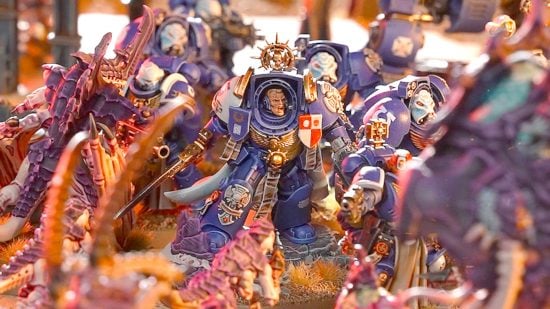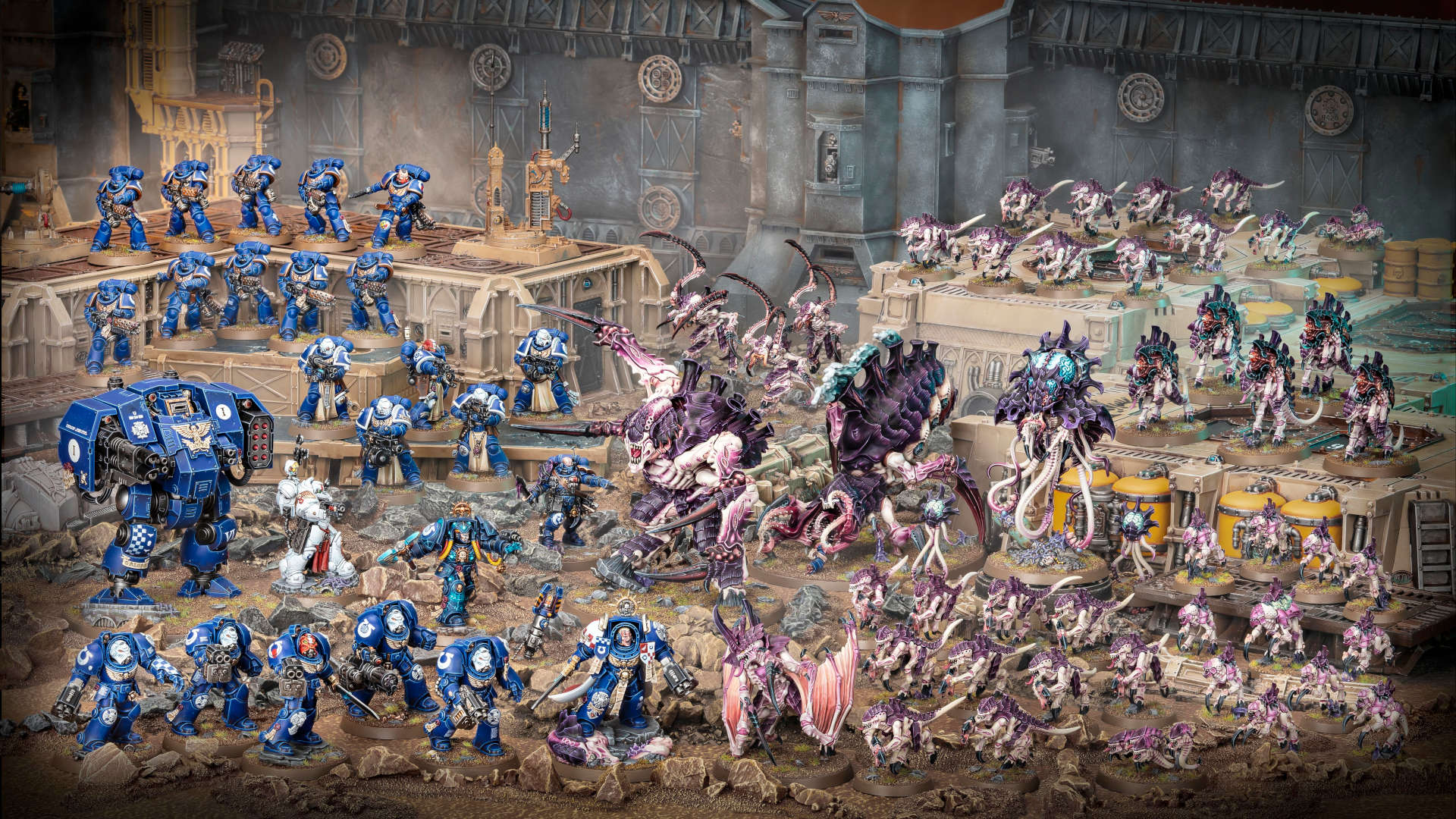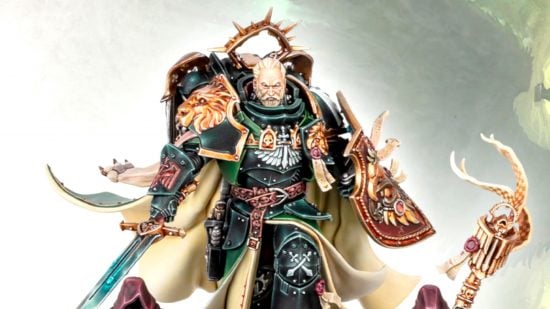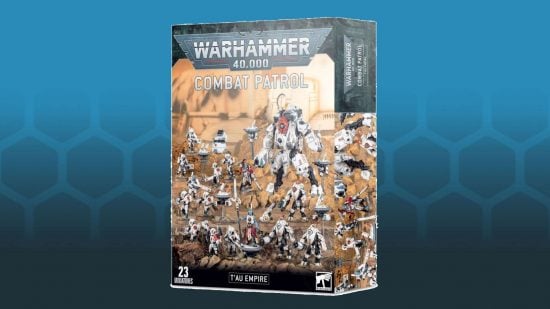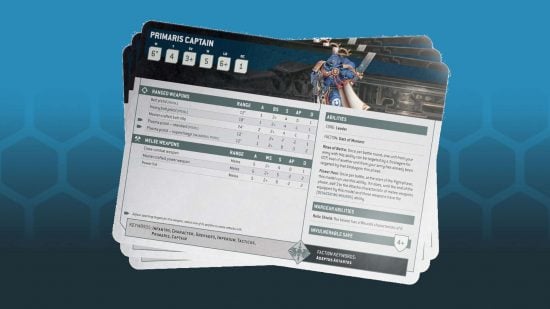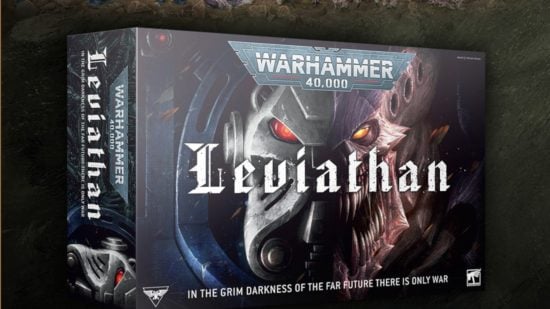Warhammer 40k 10th Edition is the brand new version of Games Workshop’s ever-growing sci-fi tabletop wargame. 10th Edition makes games simpler and quicker than they’ve ever been, and minimises how many rulebooks players need to bring to the table.
If your playgroup has seen a surge in interest in 40k because of 10th edition, hit up our guide on how to get your friends into Warhammer 40k.
Otherwise, here’s everything you need to know about Warhammer 40k 10th edition:
- Warhammer 40k 10th edition rules
- Warhamme 40k 10th edition balance dataslate
- Warhammer 40k 10th edition Index Cards
- Warhammer 40k 10th edition Codexes
- Warhammer 40k 10th edition lore
- Is Warhammer 40k 10th edition good?
- Warhammer 40k 10th edition release date
- Warhammer 40k Leviathan starter set
- Warhammer 40k 10th edition starter sets

Warhammer 40k 10th edition rules
The core Warhammer 40k 10th edition rules are free to download from the Games Workshop website.
Wargamer has some handy guides explaining key features of the rules that are very handy to understand 10th edition:
- Warhammer 40k detachments – the new way to organise armies, explained.
- Universal Warhammer 40k Stratagems explained.
- Warhammer 40k Abilities for units and weapons explained.
- How to understand Warhammer 40k Battle-shock rules.
- How to download and use the Warhammer 40k app.
- The new Combat Patrol game mode.
Warhammer 40k 10th edition Balance Dataslate
The most recent Balance Dataslate and Munitorum Field Manual points update were published on January 30 2024. These documents adjust several core rules of 10th edition, aim to redress the balance between factions, and introduce a new Drukhari Detachment.
You can download the latest balance update from the Games Workshop website – but check our quick guide to the balance dataslate winners and losers to see what’s changed, first. 
Warhammer 40k 10th edition index cards
Games Workshop made army rules for every Warhammer 40k faction available free at launch, via Warhammer 40k 10th edition Index cards. You can download your army’s 10th Edition rules PDF for free by clicking these links:
Unfortunately, Games Workshop isn’t updating the Indexes as they are superseded by Codexes, though the links for old Indexes are still live.
Warhammer 40k 10th edition Codexes
Warhammer 40k 10th edition Codexes are being released at a rate of about two per quarter, replacing the Indexes as they go. Codexes update the datasheets for every unit, add new Detachments, and come with lore and advice on painting miniatures.
The following factions have 10th edition Codexes so far:
- Space Marines
- Tyranids
- Adeptus Mechanicus
- Necrons
- Dark Angels – see our Dark Angels Codex review for our verdict.
Warhammer 40k 10th Edition lore
Warhammer 40k 10th Edition lore takes over where 9th Edition’s Arks of Omen book series left off. Across those four books, arch-traitor Abaddon the Despoiler launched deadly assaults across the Imperium of Man aboard Space Hulks, the Daemon Primarch Angron returned to reality in a storm of gore, the new Daemon Prince Vashtorr the Arkifane invaded the Dark Angels’ fortress monastery, and the T’au separatist Farsight achieved new levels of influence.
The fifth and final book, Arks of Omen: The Lion brings an end to the narrative in a momentous event – the re-awakening of the Dark Angels Primarch Lion El’Jonson.

The Imperium definitely needs that help, because at the start of 10th edition the extra-galactic Tyranids have launched a surprise invasion of the Western galactic rim, into the soft underbelly of the Imperium and the route to Holly Tera.
Using narrative books to bring an end to the story (and sometimes rules) of a game edition is a familiar pattern from Games Workshop. 7th edition 40k ended with the Gathering Storm supplements, which gave rules and narrative for the fall of Cadia, the opening of the great rift, the birth of the Eldar god Ynnead, and the resurrection of the Ultramarines Primarch Roboute Guilliman.
8th edition 40k ended with the Psychic Awakening supplements, which brought updated rules for the Warhammer 40k factions and explored the psychic impact of the great rift across the Imperium of Man.
Likewise, the Broken Realms books ushered in the leap from second to third edition for Warhammer Age of Sigmar armies.
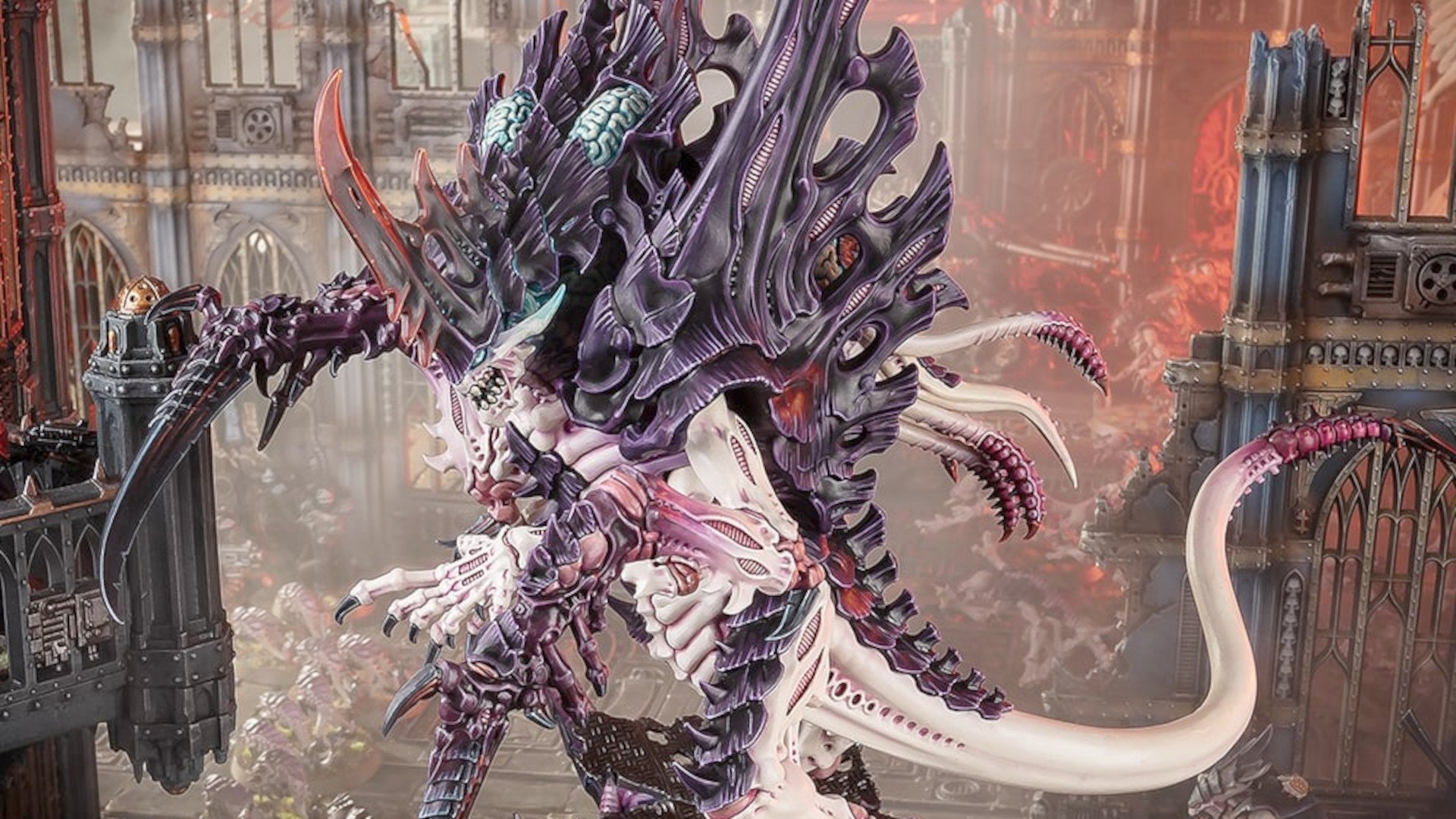
Is Warhammer 40k 10th edition good?
The new edition of the game has been out for half a year now, but if you haven’t tried it yet, you might be wondering: is Warhammer 40k 10th edition good?
First of all, do you enjoy Warhammer 40k at all? 10th edition is a continuation of earlier versions of the game. That means fairly long play sessions, fairly crunchy rules, lots of dice, and lots of information to process. If those aren’t for you, then 10th edition won’t appeal any more than a previous edition.
Games Workshop has done a very good job making 10th edition more approachable for new players. There’s a dedicated starter mode in Combat Patrol, which allows you to play games with just one box of models. The rules are fairly tightly written, and are also fairly easy for a layman to read. The core rules are short enough to read in one sitting, without being vague and imprecise.
Ninth edition 40k had big problems with the organisation of information. Rules could be scattered through multiple sections of multiple books. 10th edition compresses the information down into a much smaller space: you can play games using just the 40k app for reference quite happily.
10th edition is still a deep game with lots of tactical options, but some systems have been greatly simplified. The options open to a unit will be written on its datacard, on the single page of rules for its army, or the single page of stratagems that you can activate during a battle. Ninth edition had so many options that it was, frankly, a miserable and confusing experience unless you played very regularly.
One area where 10th edition missed the mark at launch was the balance for competitive players. Late in its lifespan, ninth edition was fairly well balanced for tournament games. 10th edition completely overhauled the entire game, and threw that balance into disarray.
Some tournament organisers produced immediate house-rules to fix perceived problems, as they considered 10th edition was “clearly not balanced”. Games Workshop then implemented a balance patch, but data from tournaments suggested the Eldar and Genestealer Cults were grossly overpowered in tournament games, while Leagues of Votann continued to suffer.
Since then there’s been a major balance overhaul with the first Balance Dataslate, and the game is currently in a pretty good spot as far as balance is concerned.

Warhammer 40k 10th edition release date
The Warhammer 40k 10th edition release date was Saturday, June 24, though Games Workshop let most of the rules and army lists trickle out in a free digital edition over the two weeks previously.
This continues GW’s tradition of releasing new editions of its big tabletop wargames during the Summer.
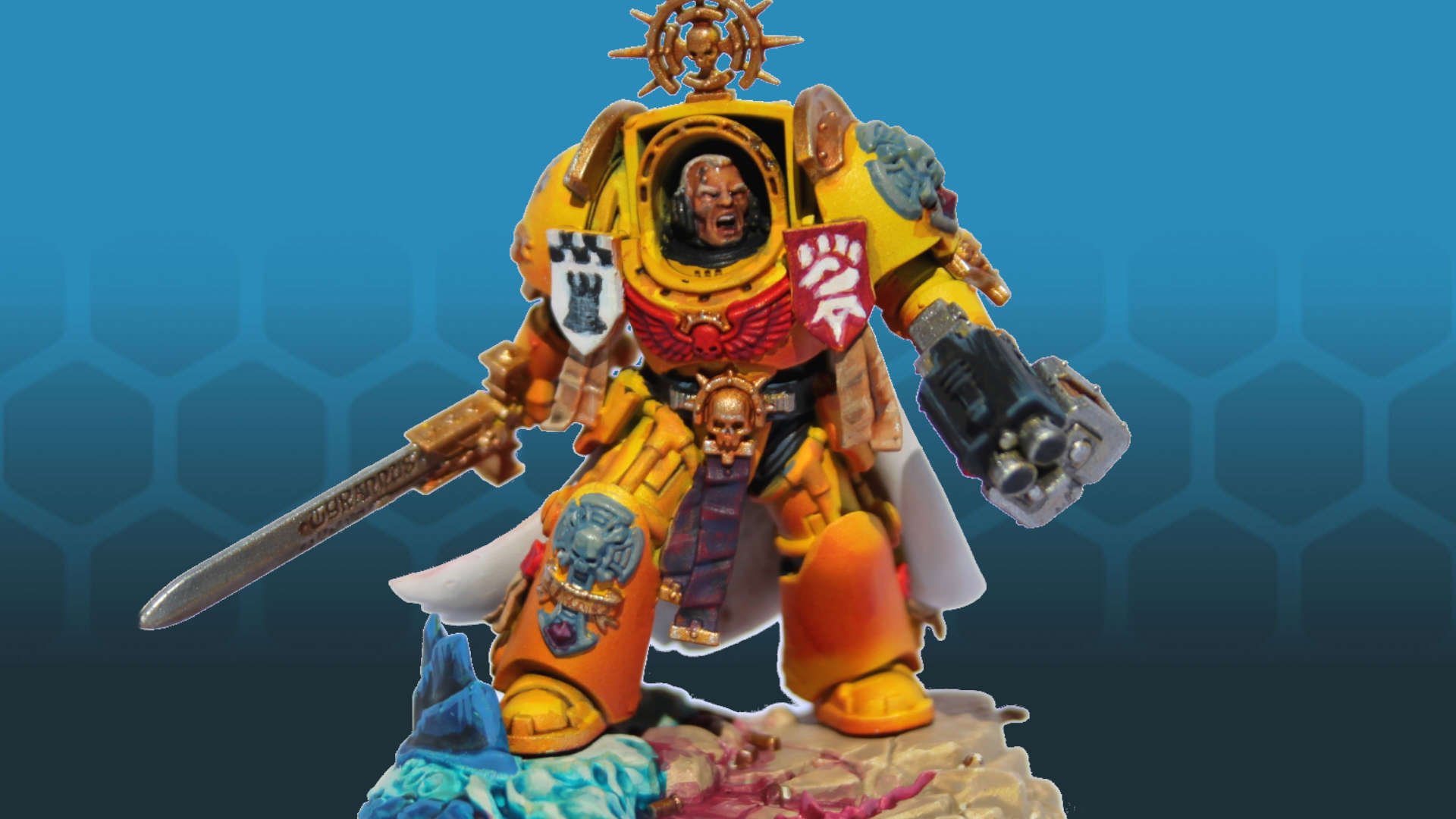
Warhammer 40k Leviathan starter set
Warhammer 40k 10th edition Leviathan was the bumper launch box set for 10th edition. The box packed in 25 Space Marines and 47 Tyranids, plus a massive hardback rulebook, and mission cards.
Check out our rundown of the Leviathan starter set contents to discover the oodles of awesome new models that released with this set. If you’d like to see what Team Wargamer got up to with the minis, you can check our Leviathan review or editor Alex’s personal account of falling in love with Tyranids and Contrast Paint.
Warhammer 40k 10th edition starter sets
Many of the models from the Leviathan launch box have made their way into the Warhammer 40k 10th edition starter sets.
There are three Warhammer 40k starter sets for 10th edition. The cheapest Introductory set comes with only a few minis and starter rules, but packs in the tools you need to get started building and painting miniatures; the regular Starter Set has more substantial forces; and the Ultimate Starter Set comes with terrain and two complete Combat Patrol forces for the Space Marines and Tyranids.
There’s also Space Marine the board game, which – despite its pretensions of adapting Space Marine 2 into a board game – is really just a Warhammer 40k starter set with a funny name.
